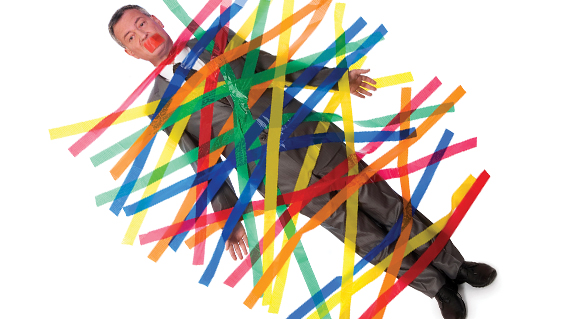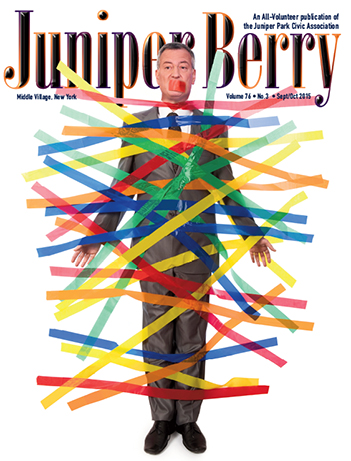The war between Mayor Bill de Blasio and the car service, Uber, came to a head in July. The mayor had asked the City Council to curb the growth and influence of Uber and made all sorts of accusations about how their fleet of cars was causing increased traffic in Manhattan below 59th Street. Of course, during this tiff, the mayor failed to disclose that he had been the recipient of a lot of campaign money from taxi medallion owners who compete with Uber.
Uber has changed the way the industry operates. You no longer need to stand on a Manhattan street corner and hope for an empty taxi to pass by. Using Uber’s app, you can hail one on your phone. A pool of drivers sees the request and if a driver is willing to make the trip, he accepts the job. This eliminates the frustration that many Queens residents have experienced of having hailed a yellow cab just to have the driver tell you that he refuses to take you across the river. Uber requires that passengers pay via credit card online, eliminating the danger to drivers carrying a lot of cash. It’s also safer in that there is a record of who the driver and passenger are for each encounter which reduces the likelihood of a crime being perpetrated by either party.
In the outer boroughs, it’s much more convenient to use Uber than to deal with the frustration brought on by calling a local car service or trying to rely on non-existent nighttime public transportation. When it’s late and you need to get home, you don’t want to wait 45 minutes to an hour for a car or the same amount of time for a bus. The average wait time for an Uber driver is 7 minutes and many local car services have decided to contract with Uber. Uber also has higher standards of cleanliness than many of the services that don’t contract with them, which means it’s unlikely that you will encounter a dirty vehicle. Frankly, Uber’s business model works, which is why its popularity is skyrocketing.
Quite obviously, the City was caught off guard by Uber. It’s not that the TLC opposes the way Uber’s system operates, but rather is upset that their agency didn’t think of it first. One of Uber’s services, UberT, allows you to hail a yellow cab if that is what you prefer, but you must pay the driver directly. So the yellow taxi industry participates in the service, but does not want Uber to proliferate further. Uber has caused the demand for and price of taxi medallions to drop off and that is cutting into the profits of medallion owners, who, as mentioned previously, are very big de Blasio donors. Uber is criticized for being a large corporation, but what exactly is the difference between the behavior of taxi medallion owners, who often behave in a monopolistic fashion, and Uber, which is trying to maximize its market share?
The rhetoric from de Blasio and others indicated that Uber was responsible for the slowdown in Manhattan traffic, and not Vision Zero, traffic calming, bike lanes, pedestrian plazas, etc. In other words, the city wanted to slow traffic down and successfully did, but turned around and tried to use Uber as a scapegoat. While there are a lot of Uber drivers, they are not all on the streets at the same time, and they are spread out across the city.
Another thing that de Blasio didn’t seem to understand was that many of the people that voted for him were backing Uber in this fight. Uber provides jobs with driver-chosen flexible hours for people who need them. They may not be perfect jobs, but they put food on people’s tables. Uber used this resentment in a fabulous PR campaign and in an independent poll, 2/3 of the city backed Uber instead of de Blasio.
De Blasio finally relented and asked the City Council to hold off on the Uber bill. He struck a deal that would call for Uber to release data to the City so that the government could study the car service’s effect on congestion, and the City Council signed off on this plan in early August. De Blasio also announced at the time that he supported the MoveNY traffic congestion plan. The funny thing about congestion pricing is that last time city officials went down that road, they asserted that yellow cabs were considered to be a “mass transit” option and the enemy was rich people driving their private cars in from Long Island. Now the blame has conveniently shifted to Uber, which actually has a ride sharing option that yellow cabs do not. More people per ride mean fewer car trips.
The main beef that users have with Uber is their “surge pricing” scheme. Surge pricing applies, Uber says, to about 10% of their trips when there is high demand for their services. They will charge several times the regular rate for a ride during surge pricing times, they say, to convince more of their drivers to get out on the road and service customers. The rider always knows before booking the ride if surge pricing is in effect and chooses to accept the higher fare or not. One would think that simply sending out a text telling drivers that there is higher than usual demand would be motivation enough for them to get out on the road without pushing an unnecessary cost onto the consumer.
The City Council is now mulling over whether to impose limits on surge pricing. The bill introduced by de Blasio in August would still allow Uber to price gouge, but no more than double their standard fare. That would serve to benefit current Uber customers while ironically increasing the attractiveness of their service as a yellow taxi alternative.
Well, no one has ever claimed that our mayor is a policy genius or true to his campaign promises. Just ask the horses at Central Park.




